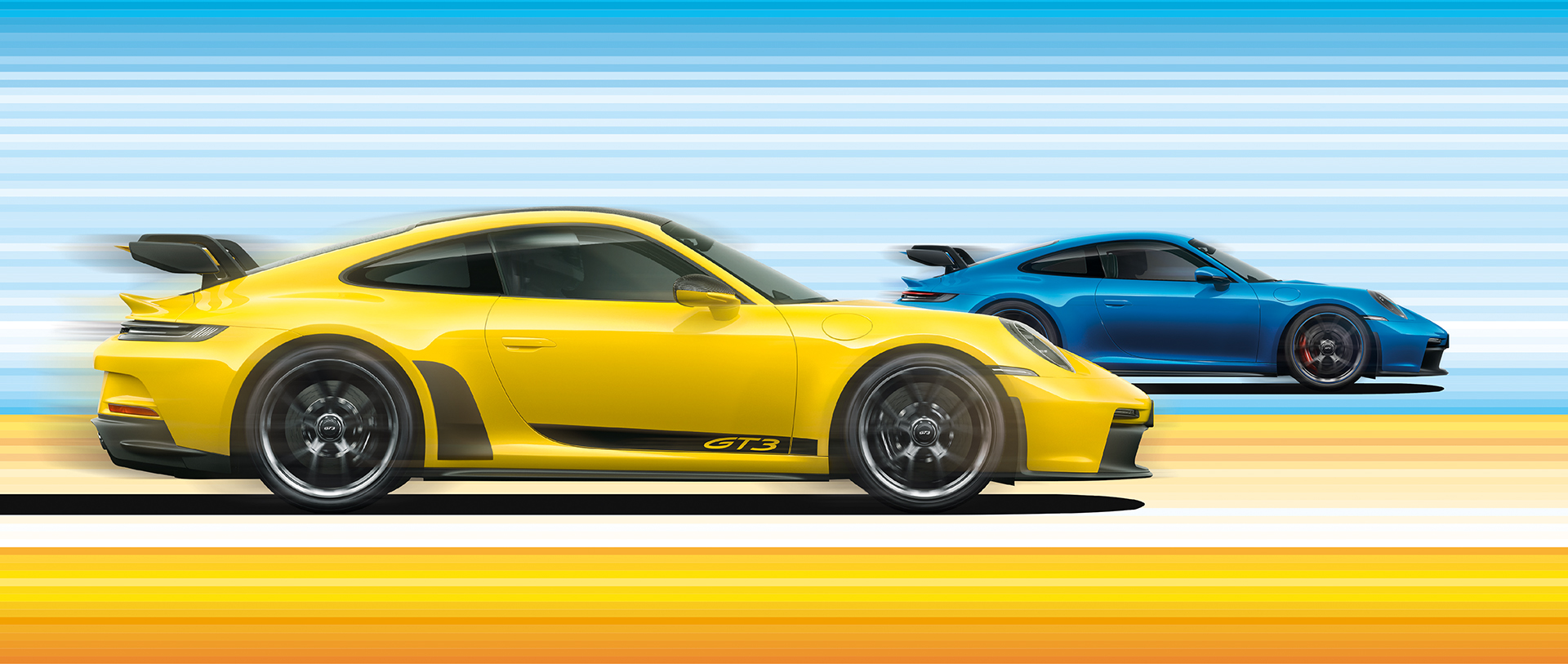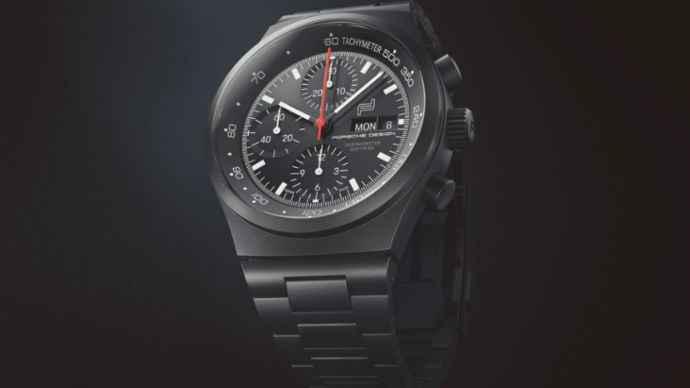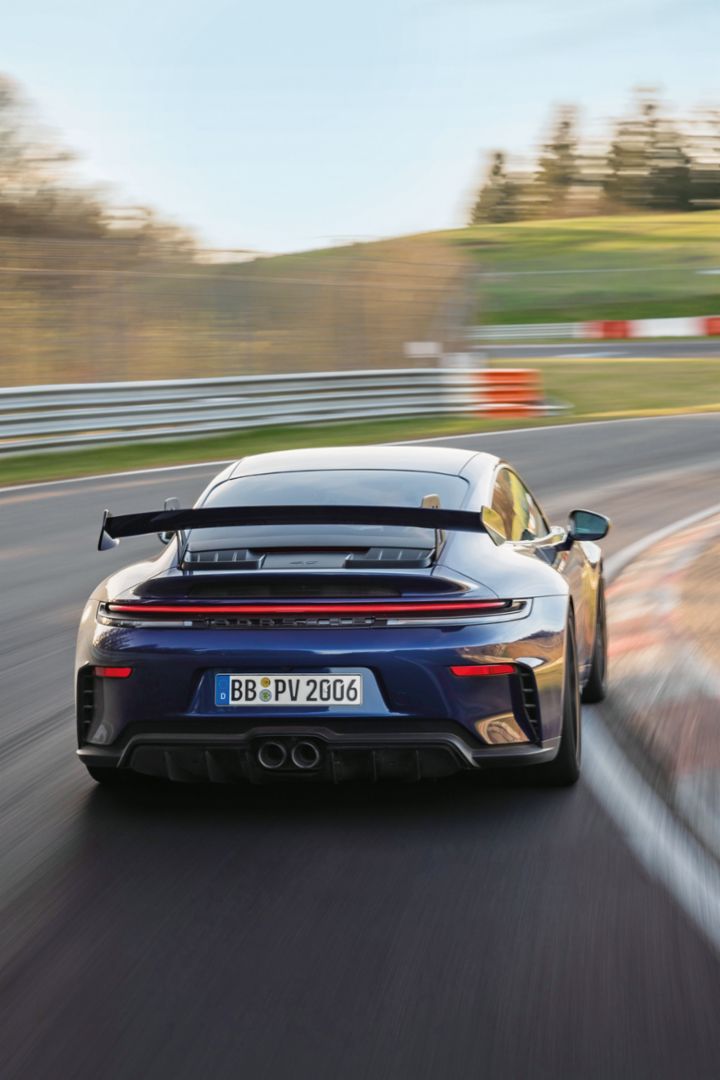If Not Now, When?
State-of-the-art racing technology for the road: in the new Porsche 911 GT3, the brand’s most powerful genes combine to create something even stronger. Extreme performance meets everyday comfort.
Illustration by Ioannis Karanasios

Experts:
Walter Röhrl and Jörg Bergmeister share their enthusiasm for the Porsche 911 GT3.The highlight reel in Walter Röhrl’s mind plays an over twenty-year-old thriller. “We never would have thought that a series production car could lay down a sub-eight-minute lap on the Nordschleife,” the motorsport legend recalls. In 1999, the first Porsche 911 GT3 pulled it off. Not least because it was driven around the Nürburgring by none other than the two-time rally world champion himself. After 20.6 kilometers, the clock stopped at 7:56.33 minutes. A sensation! For Jörg Bergmeister, twenty-three years old and an up-and-coming Porsche factory driver at the time, the case was clear: the GT3 was his dream car.

Maximum downforce:
For use on the track, both the front diffuser as well as the imposing swan-neck rear wing can be adjusted manually.Now Porsche has presented the seventh generation of the high-performance sports car. Bergmeister and Lars Kern catapulted through the infamous Green Hell during the final development drives. The absolute best time from four almost equally fast laps on what is now a 20.8-kilometer test circuit was set by development driver Kern: an astonishing 6:59.927 minutes. Roughly a minute faster than the first one. “A world of difference,” says Röhrl. Roughly a minute faster than the first one. “A world of difference,” says Röhrl.
The latest GT3 incorporates more racing technology than any of its predecessors. The layout of the double wishbone front axle, the refined aerodynamics with the swan-neck rear wing, and the striking diffuser are just a few of many examples. Bergmeister, now forty-five, knows the components well: from the Porsche 911 RSR, the GT factory race car that delivered Le Mans victories and championship titles for Porsche.
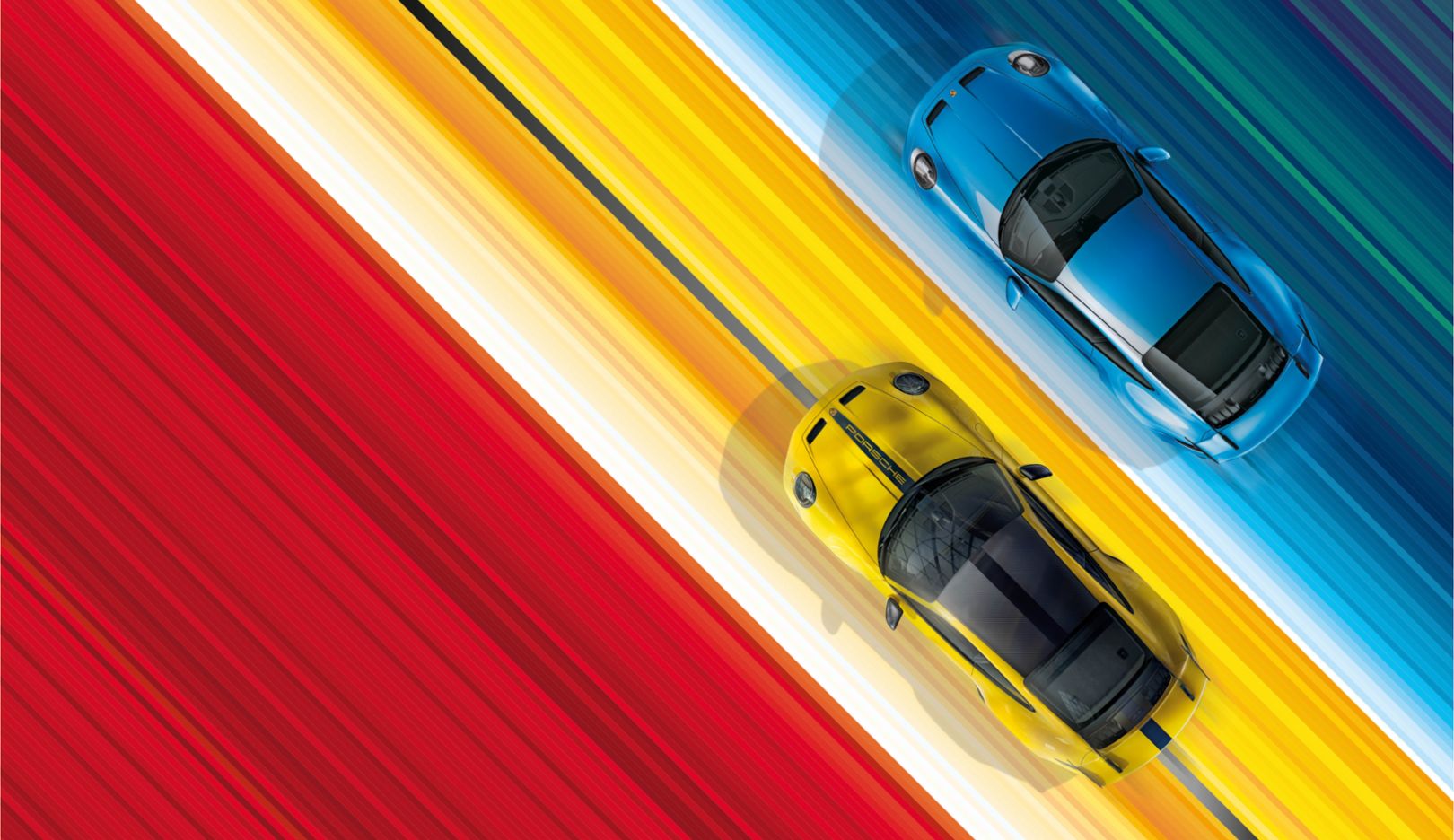
Dazzling driving machine:
The 375 kW (510 PS; 911 GT3 (2023): Fuel consumption* combined (WLTP) 13.0 – 12.9 l/100 km, CO₂ emissions* combined (WLTP) 294 – 293 g/km, CO₂ class G ) four-liter, six-cylinder boxer engine in the Porsche GT3 originates in racing, as do the sophisticated aerodynamics and chassis technology.Stimulating sound sensation
All perfectly lovely, all high-tech, but the absolute sensation always was and still remains this absolute sound. “Exhilarating,” says Röhrl approvingly. “No car enthusiast can resist it.” Bergmeister nods in agreement. He’s working on the next generation of enthusiasts. “My three-year-old son always likes it when the sport exhaust system is activated.” The orchestral naturally aspirated engine mobilizes 375 kW (510 PS). The four-liter, six-cylinder boxer engine is based on the racing engine in the 911 GT3 R and is used in a practically unmodified state in the new 911 GT3 Cup. All of the high-performance technology comes from Porsche Motorsport—developed in Flacht, the legendary complex on the southern end of the Weissach Development Center.
When equipped with the standard PDK transmission, the new GT3 sprints from 0 to hundred kilometers per hour in just 3.4 seconds and achieves a top speed of 318 kmh. It delivers its maximum engine output at 8,400 rpm. “Over twenty years, practically all the advancements that were developed for the GT race cars were adopted in the road car,” notes Röhrl.
911 GT3 (2023): Fuel consumption* combined (WLTP) 13.0 – 12.9 l/100 km, CO₂ emissions* combined (WLTP) 294 – 293 g/km, CO₂ class G
From the GT race car straight to the series model
“I have never driven a better series production car,” Bergmeister swoons over the latest pinnacle. “You always know exactly what the car is going to do.”
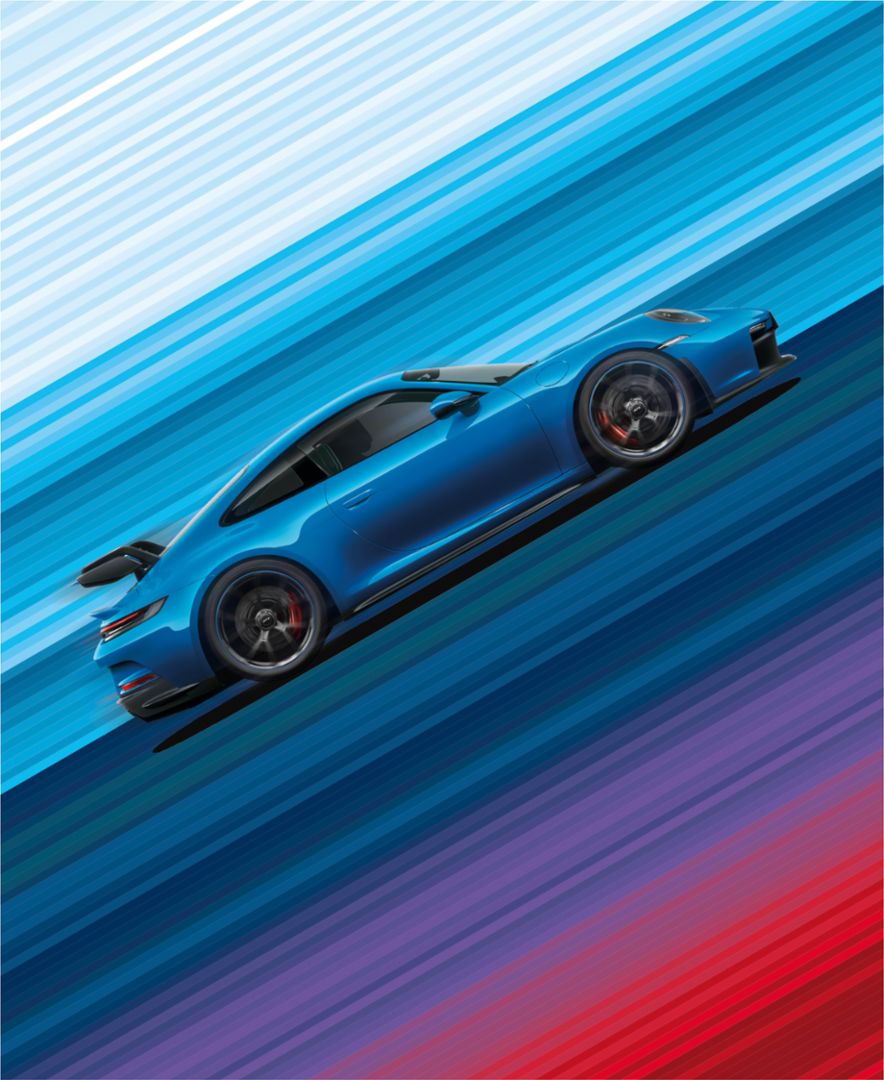
Strong silhouette:
The body of the GT3 is more muscular than ever. But thanks to lightweight construction, its weight is on par with its predecessor.Röhrl confirms: “Balance is the key to driving fast. And I’ve been a weight reduction fanatic all my life.” The lanky 1.96-meter-tall gent pats his flat stomach with a grin. “When I hear that the new GT3, which is much larger, and much more capable, essentially weighs just under seventy kilos more than the first GT3, I can only doff my hat to a masterpiece of technology!”
The car’s commendable weight is also down to insights from the racing world. The front hood made of carbon fiber-reinforced plastic, for example, or the lightweight glass windows, optimized brake rotors, and forged alloy wheels. The lightweight sport exhaust system itself saves a stately ten kilos. All told, the GT3 weighs in at a svelte 1,435 kilograms. Die-hard purists can order a six-speed manual transmission that tips the scales with an additional seventeen kilograms. Further weight-optimized components such as the exposed carbon fiber roof are also available.
“Balance is the key to driving fast.” Walter Röhrl
The visual shift assistant with colored bars to the left and right of the tachometer is useful on the track. The bars fill in yellow and flash blue at the optimum shifting speed. The shift light is racing technology from Flacht as well. And the new track screen delivers performance-relevant information such as the tire pressure, oil pressure, temperatures, and fill levels. With all these and other details, the GT3 is unquestionably an athlete designed for the thrill of a track excursion. But not only.
The most powerful series 911 with a naturally aspirated engine offers an astonishing level of everyday comfort for a razor-sharp driving machine. What else is there to say? The final word goes to the grand master of driving: “I am often asked which is my favorite 911,” says Röhrl. “It’s always the latest one—and the next one.”
SideKICK: Shoptalk in 9:11 Magazine and The Porsche Podcast
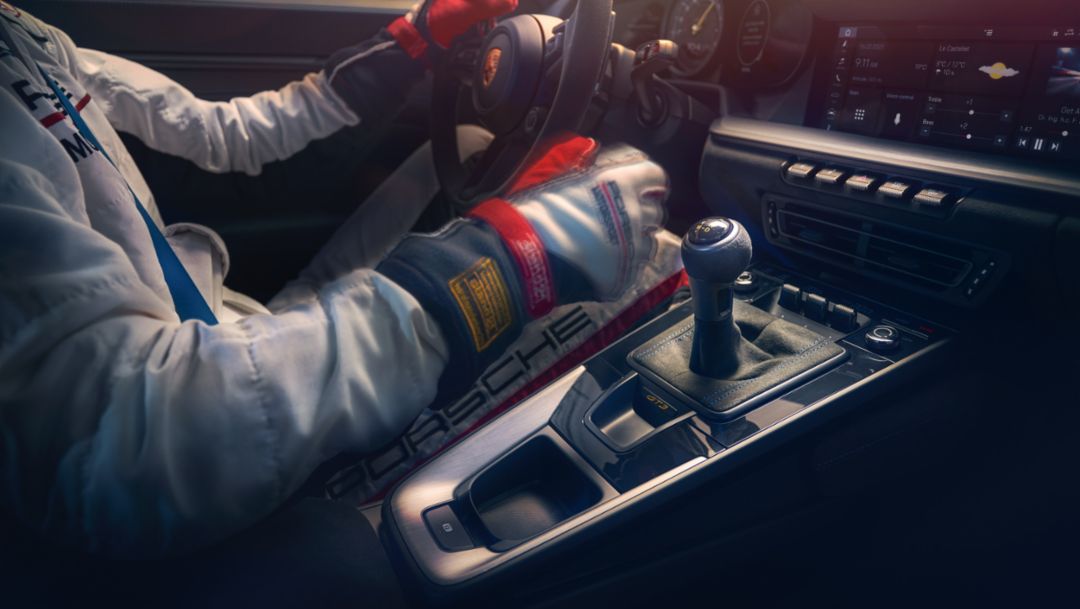
Walter Röhrl and Jörg Bergmeister came together to talk about the new Porsche 911 GT3 in 9:11 Magazine. You can watch the whole exchange on film at 911-magazine.porsche.com. The Porsche Podcast examines the GT legend. In the German version, Porsche director of communications Sebastian Rudolph hosts Jörg Baumeister for a talk with director of GT development Andreas Preuninger.
In English, Rudolph speaks with product line director Frank-Steffen Walliser and brand ambassador Mark Webber on the magic of those two letters. All podcast episodes, including transcripts in German and English, are available at newsroom.porsche.de/podcast (the English-language recordings are available at newsroom.porsche.com). The episodes are available without transcriptions on all podcast platforms.
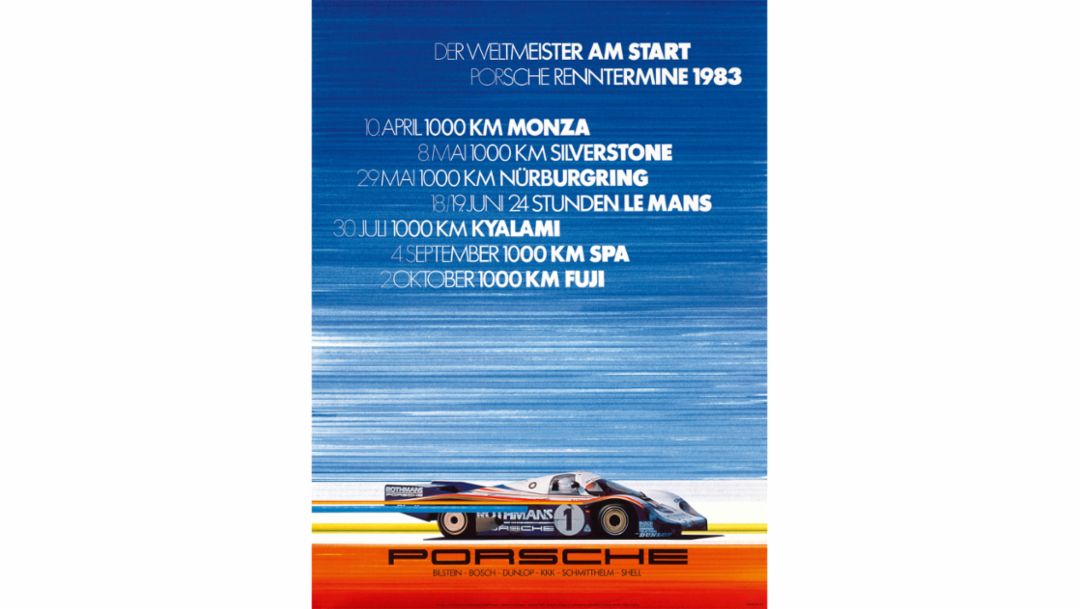
The art of racing
The cover of this issue draws on an historic role model. It nods to a poster from 1983, designed by Erich Strenger. Porsche hired the Stuttgart-based graphic designer in 1951. He shaped Christophorus and the image of the brand through his racing posters. The work on the left shows a Porsche 956 like the one Jacky Ickx drove. The Belgian won the 1983 World Endurance Championship.
Consumption data
911 GT3
911 GT3 (2023)
-
13.0 – 12.9 l/100 km
-
294 – 293 g/km
-
G Class
Taycan Turbo GT
-
21.2 – 20.5 kWh/100 km
-
0 g/km
-
A Class
